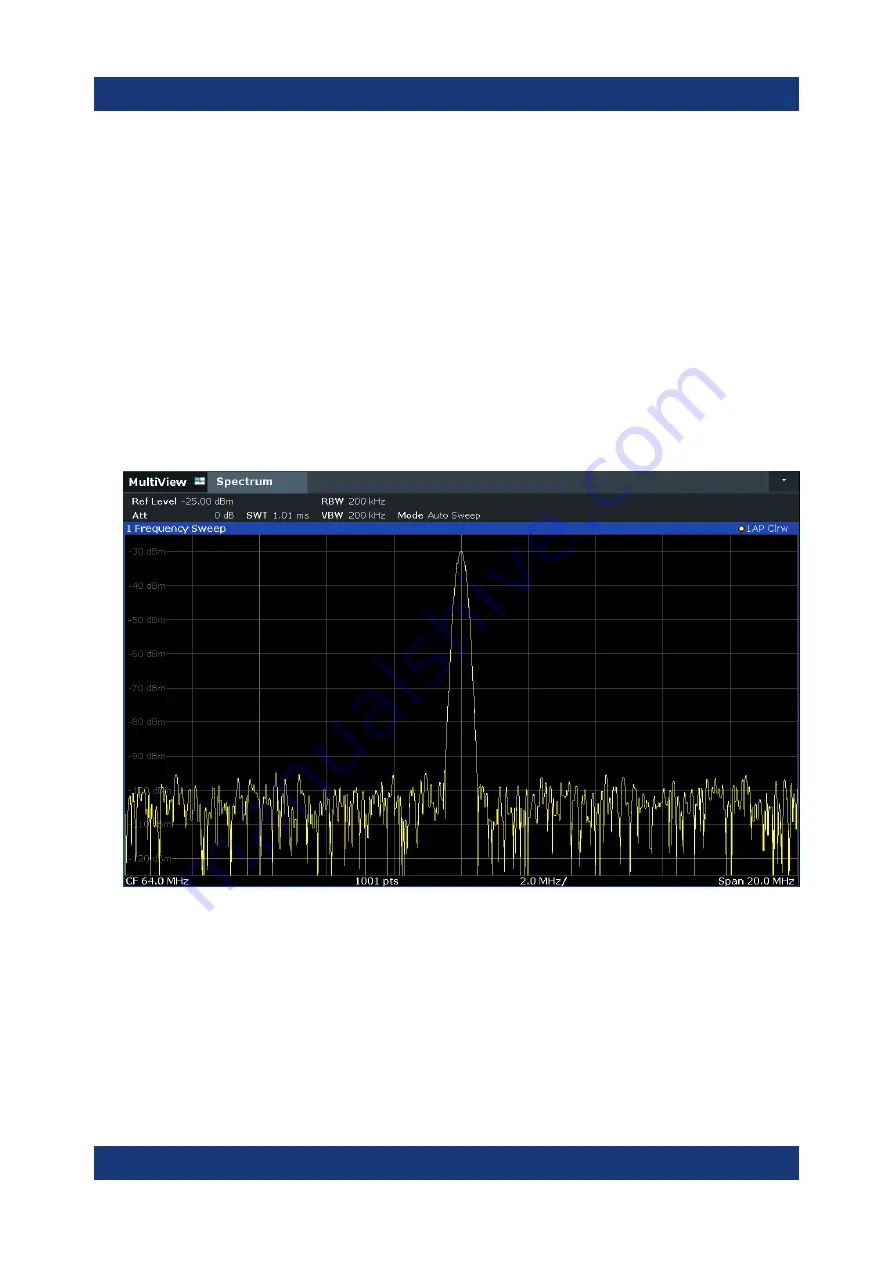
Trying Out the Instrument
R&S
®
FSMR3000
52
Getting Started 1179.0100.02 ─ 01
b) Tap the "Frequency" button.
c) In the "Center" field, enter
64
on the number pad on the front panel.
d) Press the "MHz" key next to the number pad.
2. Reduce the span to 20
MHz:
a) In the "Span" field of the "Frequency" dialog box, enter
20
MHz
.
b) Close the "Frequency" dialog box.
3. Set the reference level to -25
dBm:
a) In the configuration "Overview", tap the "Amplitude" button.
b) In the "Value" field of the "Amplitude" dialog box, enter
-25
dBm
.
The display of the calibration signal is now improved. The maximum at the
center frequency (=calibration frequency) of 64
MHz becomes visible.
Figure 6-2: Calibration signal with optimized display settings
6.2
Displaying a Spectrogram
In addition to the standard "level versus frequency" spectrum display, the
R&S
FSMR3 also provides a spectrogram display of the measured data. A spec-
trogram shows how the spectral density of a signal varies over time. The x-axis
Displaying a Spectrogram






























